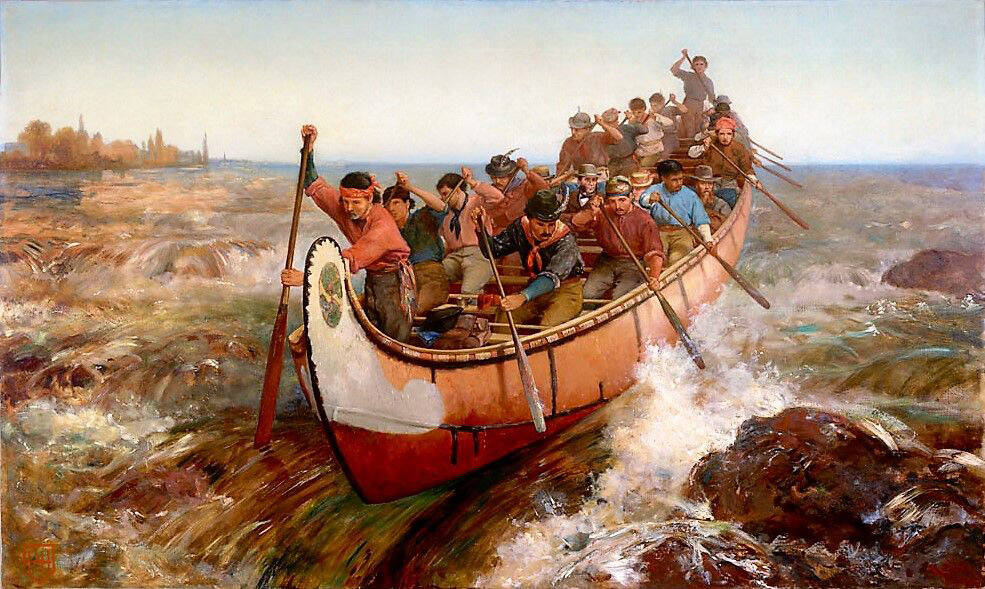Editor’s Note: This is the first of a four-part series.
Starting at the western tip of Lake Superior, the Quetico-Superior Country runs along 150 miles of the United States-Canadian border with Canada’s Quetico to the north and Minnesota’s Boundary Waters Canoe Area Wilderness to the south.
This extraordinary place is known as the BWCA. Together they encompass over 4 million acres of protected wilderness. A web of thousands of miles of canoe routes connects shimmering glacial lakes, teaming with northern pike, walleye and bass, by streams, portage trails and campsites. This wilderness area is a canoeist’s and fisherman’s paradise that has changed little since the glaciers melted.
In 1976, my grandfather built a cabin deep down the Gunflint trail, a 57-mile-long scenic byway that winds from Grand Marais, Minnesota, a picturesque community on the shore of Lake Superior. The Gunflint trail continues to Lake Saganaga, on the U.S.-Canadian border.
Turning off the trail and driving 45 minutes northeast down a dirt road brings you to my grandparent’s cabin, nestled on a hillside with a large deck jetting out the back into the pines and overlooking a remote lake.
I love everything about that cabin. It has moss that grows on the wooden shingles, and there’s a great big stone fireplace and a thick wooden door. The cabin smells like wood, leather and pine when you open it.
On the wall hangs a large picture of perhaps half a dozen men wearing red sashes in a large birchbark canoe shooting a rapid. These men were called voyageurs. Their sense of adventure, while not as grand, continued with my family.
My father, in the summers, was a canoe guide in the BWCA and worked for the Minnesota Department of Natural Resources. Later we would move to the Midwest for him to pursue a master’s degree. But my parents continued to take my sisters and me on extended canoe trips to the BWCA almost every summer.
We would use my grandparent’s cabin as our jumping off point and always return for a few days of R & R. Those trips would be full of paddling, portaging, fishing, reading in the sun and berry picking. We had camping mugs tied to the canoe, and we would dip them into the water and drink straight from the lakes.
We lived off of fish and blueberry pancakes and, at night, would sit around the campfire telling stories and jokes and singing. All my fondest memories as a child revolve around these trips.
In my 20s and out on my own, I found myself less and less going to the cabin and canoeing. I was busy working on a farm in Oklahoma, and it was hard to get away in the summer. But in 2010, I took my dad and five friends on a canoe trip.
The Ranger Station in Cache Bay sits on a small round island, and in that station sits Ranger Janet. She has been the warden there since the beginning of time; I see her as part of the experience. We checked in and got our permits squared away with Janet.
As we were launching off to begin our trip, there was a man in an expedition kayak with gear strapped everywhere, getting ready to embark on what looked to be a very long trip. I thought of the men in the picture in the birchbark canoe at the cabin who moved fur across Canada every summer.
I wondered, could you still cross Canada using the fur trade routes in the modern day?
As I was heading back to the canoes, I turned and asked Janet, “Have you ever heard of anyone following the fur trade routes across Canada in a season?”
“No, I met a guy doing it for over three summers in sections. He lost his shoes, so I gave him a pair of my ex-husband‘s, but no, it’s not possible to do in a season,” she said very matter-of-factly.
“Well, what about the voyageurs? They used to do it,” I stated.
“That’s back when men were men,” she said.
To my surprise, I responded with, “Well then, I’m going to be the first,” and with that, I turned and walked away.
The question nibbled at my mind the entire trip. Once back at the cabin, I collected all my granddad’s books on voyageurs and started reading them enthusiastically.
These hardy men moved furs, primarily beaver pelts, through the waterways of North America to Montreal in birchbark canoes throughout the 18th and 19th centuries. There the pelts would be loaded onto ships and shipped all over Europe and as far as Russia.
Voyageurs were primarily French Canadians from Montreal who would venture west in birchbark canoes. A typical voyageur was of French descent, short in stature, extremely strong and could sing well, as singing was a huge part of their daily lives.
They paddled at 55 strokes per minute for an hour at a time, all while singing. They worked 14 to 16 hours a day — rising at two or three in the morning and paddling several hours before stopping for breakfast. Whenever possible, they enjoyed gambling, fighting and drinking.
They did not have time to forage and hunt and lived primarily off of pemmican and rubaboo. Pemmican is a mix of dried, pounded meat and fat (perhaps the original Keto Diet), and rubaboo is a soup made of peas or corn, pork and flour. They slept outdoors under the canoes.
Each was required to carry two 90-pound packs, sometimes more, across portages. They would typically shuffle/jog a quarter mile, set the bundle down, go back for more and continue.
Tobacco was as absolutely necessary as paddling and singing. Every hour or so, they would stop paddling, light up a bowl and have a smoke. The voyageurs measured lakes in “Pipes.”
These men were legends and heroes in their day. A famous voyageur quote from an unnamed voyageur goes like this.
“I could carry, paddle, walk and sing with any man I ever saw. I have been 24 years a canoe man and 41 years in service; no portage was ever too long for me; 50 songs could I sing. I have saved a life of 10 voyageurs and had 12 wives and six running dogs. I spent all of my money in pleasure. Was I young again, I’d spend my life the same way. There is no life as happy as a voyageur’s life!”
Although this line of work was seen as prestigious, it was a hard, grueling existence. Voyageurs often drowned, broke limbs, died of hernias and had almost no chance of retirement or wealth. They lived short, brutal, adventurous lives and, by all accounts, seemed like they wouldn’t change a thing.
So, Ranger Janet had thrown down the gauntlet, and two years later, I decided to pick it up. I was going to attempt to paddle from Lachine, Montreal, to Nome, Alaska, in a single season. This story will be featured in next week’s article. Eventually, this trip would take me on a journey from the Boundary Waters to the Kenai National Wildlife Refuge.
Nate Grinnell is a seasonal on the Kenai National Wildlife Refuge trail crew, with deep ties to river adventures. Find out more about refuge events, recreation, and more at kenai.fws.gov or Facebook: https://www.facebook.com/kenainationalwildliferefuge and more Refuge Notebook articles (1999–present) at https://www.fws.gov/kenai-refuge-notebook.


